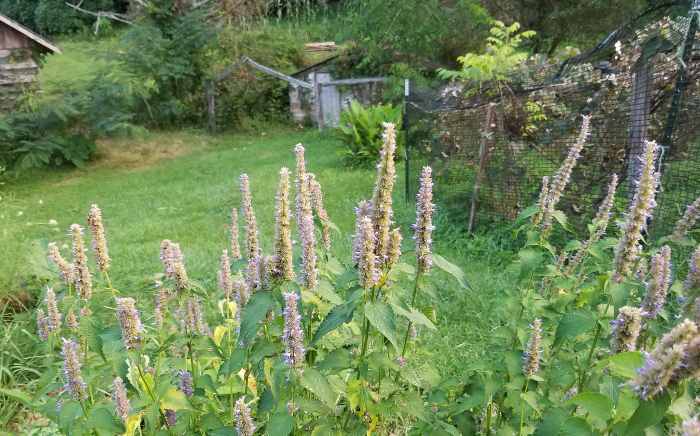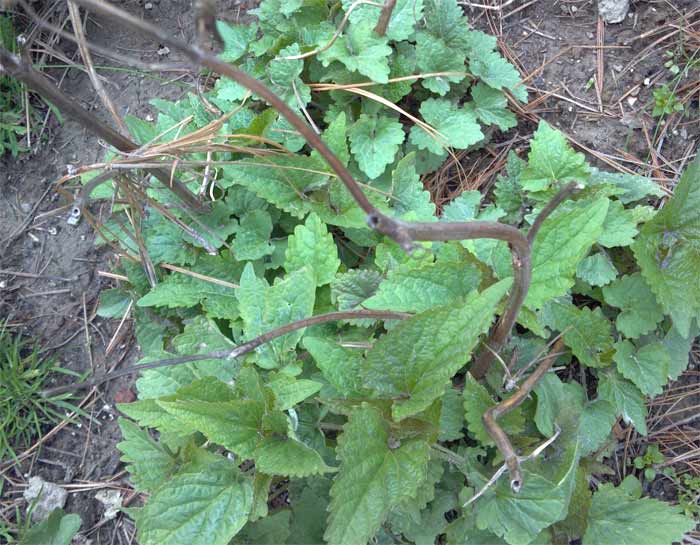Anise hyssop in herbal medicine
Anise hyssop makes a flavorful herbal tea.
Anise hyssop is full of antioxidants and other healthy properties. We like to keep it on hand in case flu or a cold virus strikes. Anise hyssop herbal tea is one of the best natural medicines for cold and flu.
Anise hyssop tea naturally relieves cough and congestion, especially when combined with mullein.
Anise hyssop is also a good herb for reducing fevers, easing sore throat pain, for cold sores, for burns, and to treat shallow wounds.
Studies show that anise hyssop may be a natural treatment for the herpes virus. That is good news for people that suffer with outbreaks.

This post is about anise hyssop (Agastache).
Anise Hyssop (Agastache), known as hummingbird mint, giant hyssop, and licorice mint, is not the same as Hyssop (Hyssopus).
Anise Hyssop is native to North America and a member of of the mint family, while hyssopus is a member of the carrot family and native to Europe."
In this post I am writing about anise hyssop because it is growing in my herb bed! I am familiar with anise hyssop, but have never grown or used the European plant.
Just like with European "hyssop", anise hyssop is not related to "anise". Anise (Illicium verum) is a completely different herb.
Sometimes names in the plant kingdom can be confusing! That's why Latin names are important for identification.
Once you gain experience in herbal medicine, names and exact varieties become easier to remember. Read all you can, watch videos, and use herbs in your life as often as possible. Soon you will be as comfortable with Latin names as you are the common ones.

Anise hyssop is full of antioxidants.
Studies show that anise hyssop contains large amounts of antioxidants, polyphenols, and flavonoids. These substances help delay the aging process naturally. That is good news for sure!
Not only is anise hyssop good for colds and flu, it is useful for treating the symptoms of stress such as insomnia and panic attacks.
It also may increase fertility in both men and women.
Many uses for anise hyssop
Anise hyssop plants have potent essential oils that fight harmful organisms, help lung problems, and make breathing easier when congested. Anise hyssop opens up the lungs!
Anise hyssop can also be used to stop diarrhea due to its astringent properties.
History of Anise Hyssop
Native Americans have used anise hyssop in herbal teas for centuries. They also used it in sweat lodges since it induces perspiration.

Growing anise hyssop
Anise hyssop is a shrubby perennial that grows about three feet tall. It makes an attractive addition to the flower border. The whole anise hyssop plant is deliciously aromatic.
Bees and butterflies love the purple flowers, which give a wonderful flavor to honey. Anise hyssop flowers keep on coming from Spring to Fall, providing a dependable, long lasting food source for the bees. Anise Hyssop should be in every pollinator garden.
Anise hyssop plants do not like wet feet. They will grow in most soils, as long as it is well drained.
Anise hyssop does well in full sun or part shade and will form a clump over time. It is easy to start from seed.
Harvesting anise hyssop
I harvest my anise hyssop several times during the growing season.
When the plants are covered in blooms, usually mid May, I cut the whole plant back to half. I dry these "tops" for tea. Topping makes the whole "bush" stouter and more vigorous.
In early September, I cut the plant back again, harvesting about 2 foot sections of the tops. I also dry the second cutting for herbal tea.
If you don't harvest the tops during the growing season, you might need to stake your anise hyssop plants to keep them from falling over.
*Always consult with a healthcare professional when using any herbal remedy especially when pregnant, nursing, or taking other medications.
Sources:
https://growitbuildit.com/anise-hyssop-guide-agastache-foeniculum/
https://www.ncbi.nlm.nih.gov/pmc/articles/PMC7772399/
https://plants.ces.ncsu.edu/plants/agastache/
Blessings to you and yours!
Thanks so much for reading my blog. Jan.

*Note - the information on this website has not been evaluated by the Food and Drug Administration.
© 2005-2024 website design and content by Janice Boling